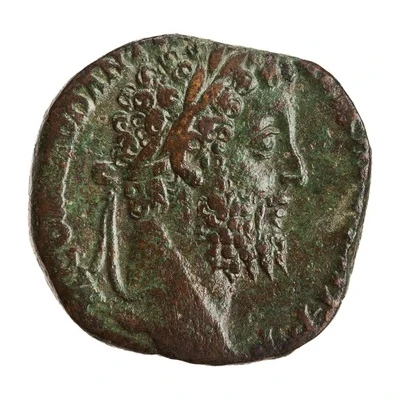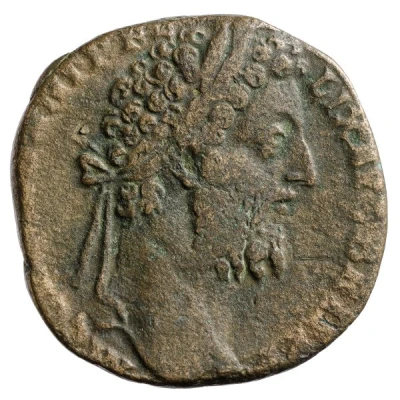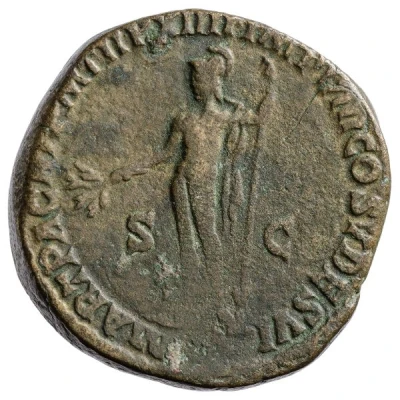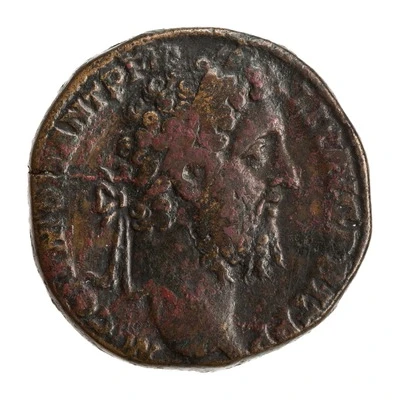
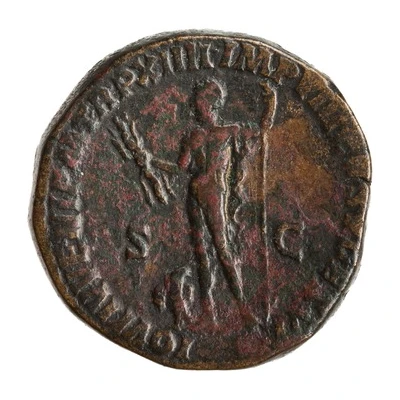

© American Numismatic Society (ANS)
Sestertius - Commodus IOVI IVVENI P M TR P XIIII IMP VIII COS V DES VI S C; Jupiter
189 year| Bronze | 21.3 g | 28 mm |
| Issuer | Rome › Roman Empire (27 BC - 395 AD) |
|---|---|
| Emperor | Commodus (Lucius Aurelius Commodus) (177-192) |
| Type | Standard circulation coin |
| Year | 189 |
| Value | 1 Sestertius = ¼ Denarius |
| Currency | Denarius, Reform of Augustus (27 BC – AD 215) |
| Composition | Bronze |
| Weight | 21.3 g |
| Diameter | 28 mm |
| Shape | Round (irregular) |
| Technique | Hammered |
| Orientation | Variable alignment ↺ |
| Demonetized | Yes |
| Updated | 2024-10-06 |
| Numista | N#265929 |
|---|---|
| Rarity index | 100% |
Reverse
Jupiter, nude, standing left, holding thunderbolt in right hand and sceptre in left hand; at feet, eagle.
Script: Latin
Lettering: IOVI IVVENI P M TR P XIIII IMP VIII COS V DES VI S C
Translation:
Jovi Juveni. Pontifex Maximus, Tribunicia Potestate Quarta Decima, Imperator Octavum, Consul Quintum, Designatus Sextum. Senatus Consultum.
Jupiter, the youth. High priest, holder of tribunician power for the 14th time, supreme commander (Imperator) for the eighth time, consul for the fifth time, elect for the sixth time. Decree of the senate.
Comment
Mass varies: 16.237–28.19 g;Diameter varies: 26.93–29 mm;
Example of this type:
American Numismatic Society (ANS)
Source:
Online Coins of the Roman Empire (OCRE)
Interesting fact
One interesting fact about this coin is that it features an image of Jupiter, the Roman god of the sky and thunder, on one side, and an image of Commodus, the Roman emperor, on the other side. This coin was minted during Commodus' reign (180-192 AD) and was used as a standard circulation coin in the Roman Empire. The image of Jupiter on the coin was meant to symbolize the power and authority of the Roman state, while the image of Commodus served as a reminder of the emperor's divine right to rule.
